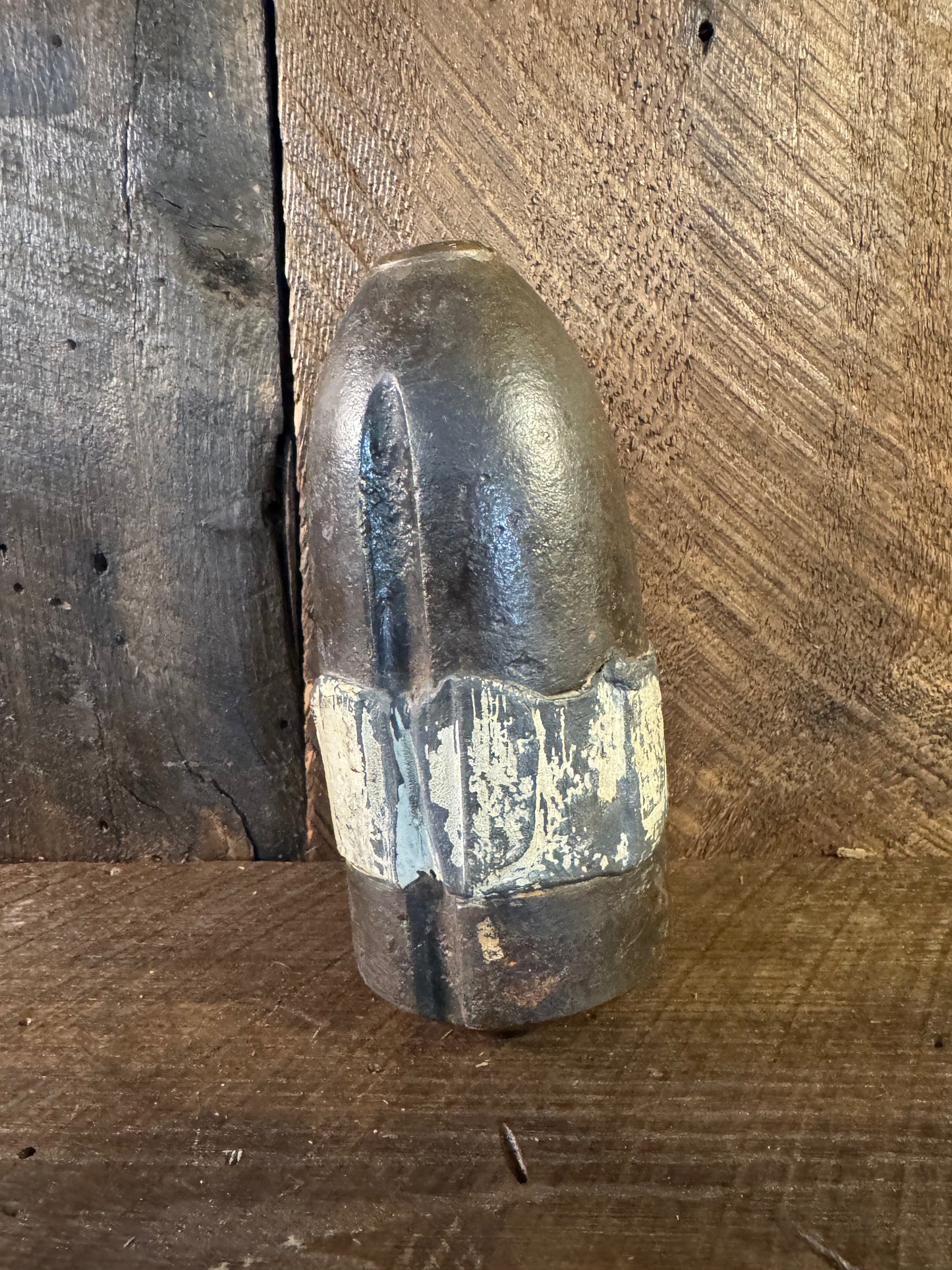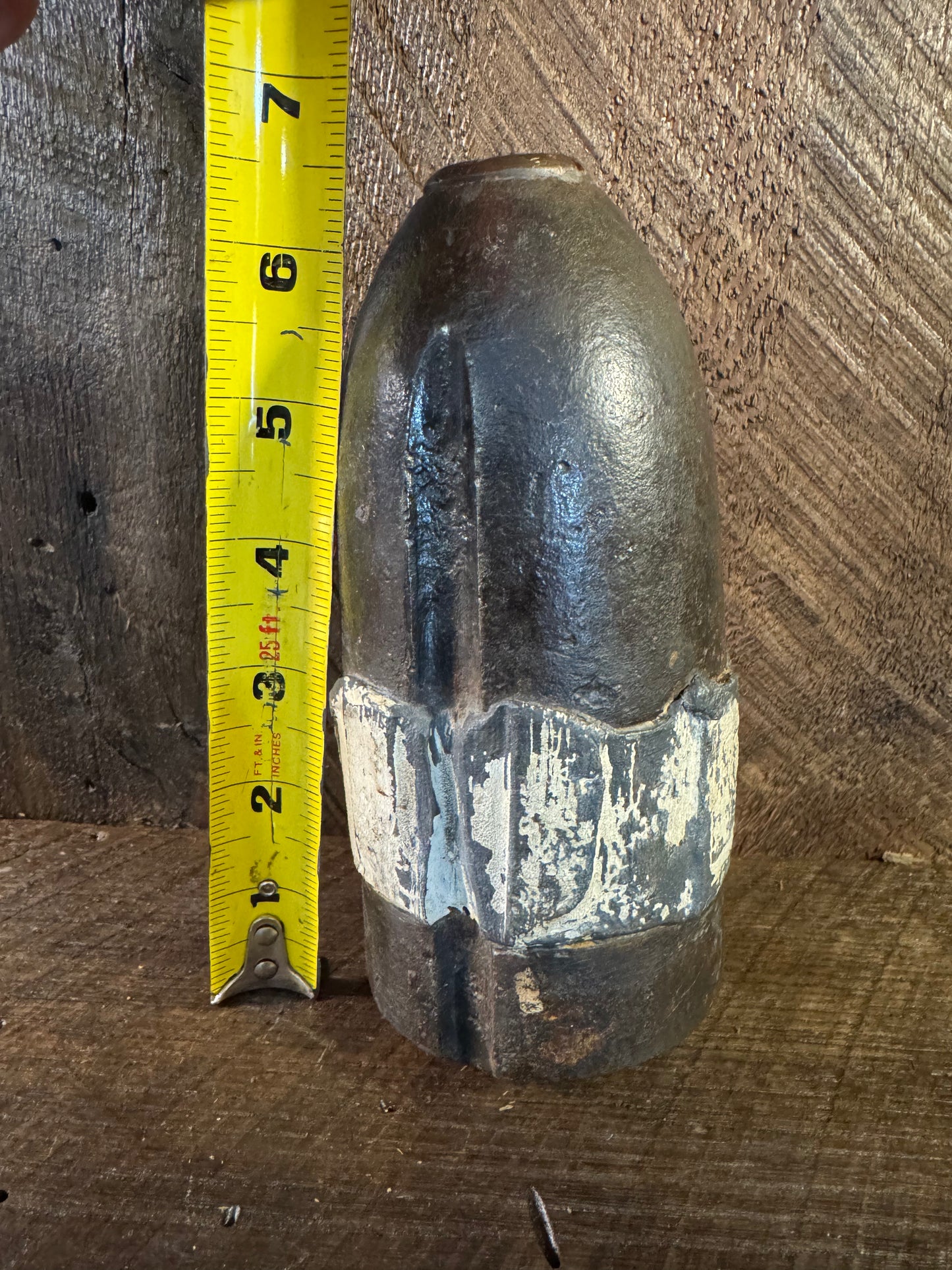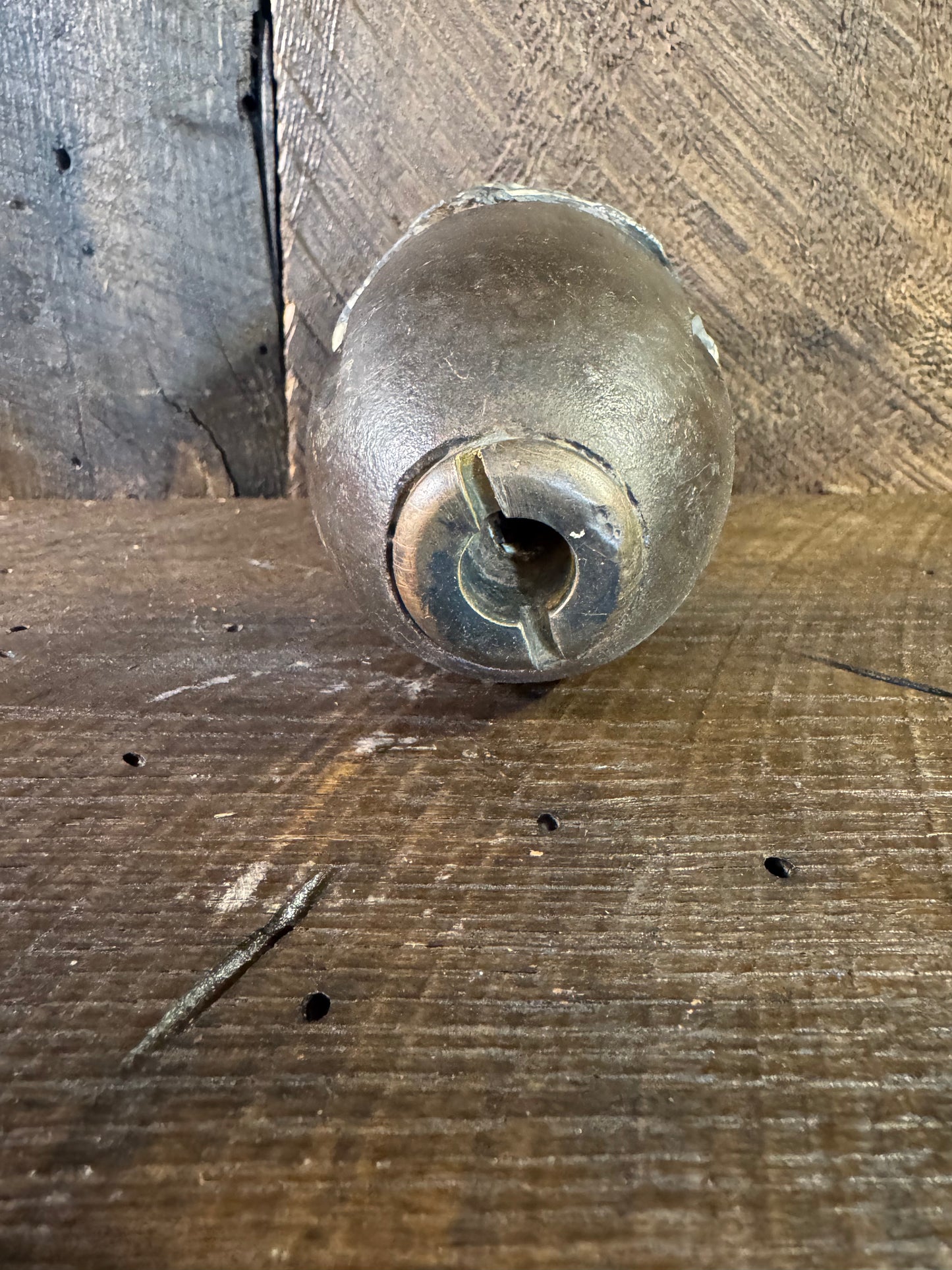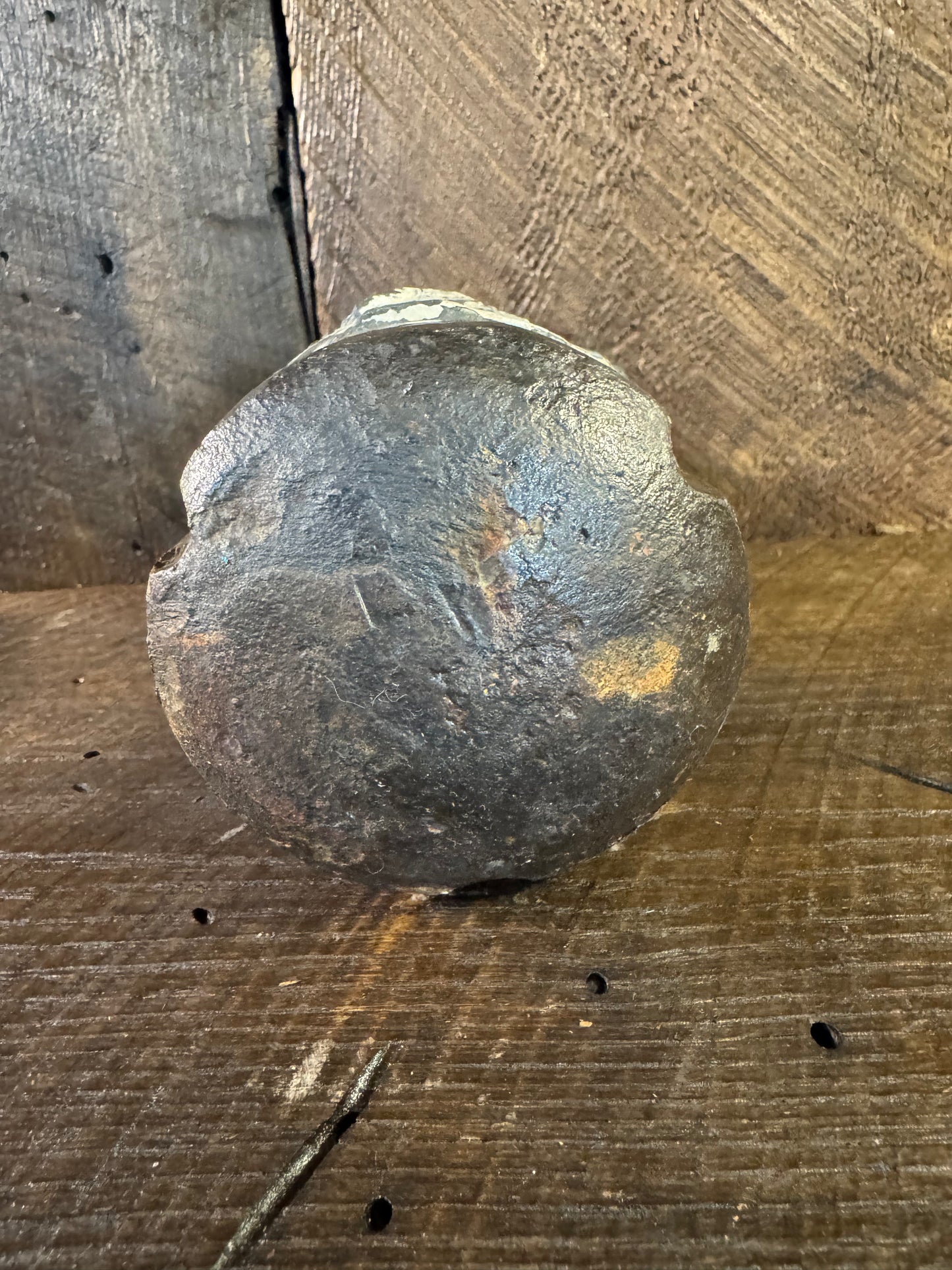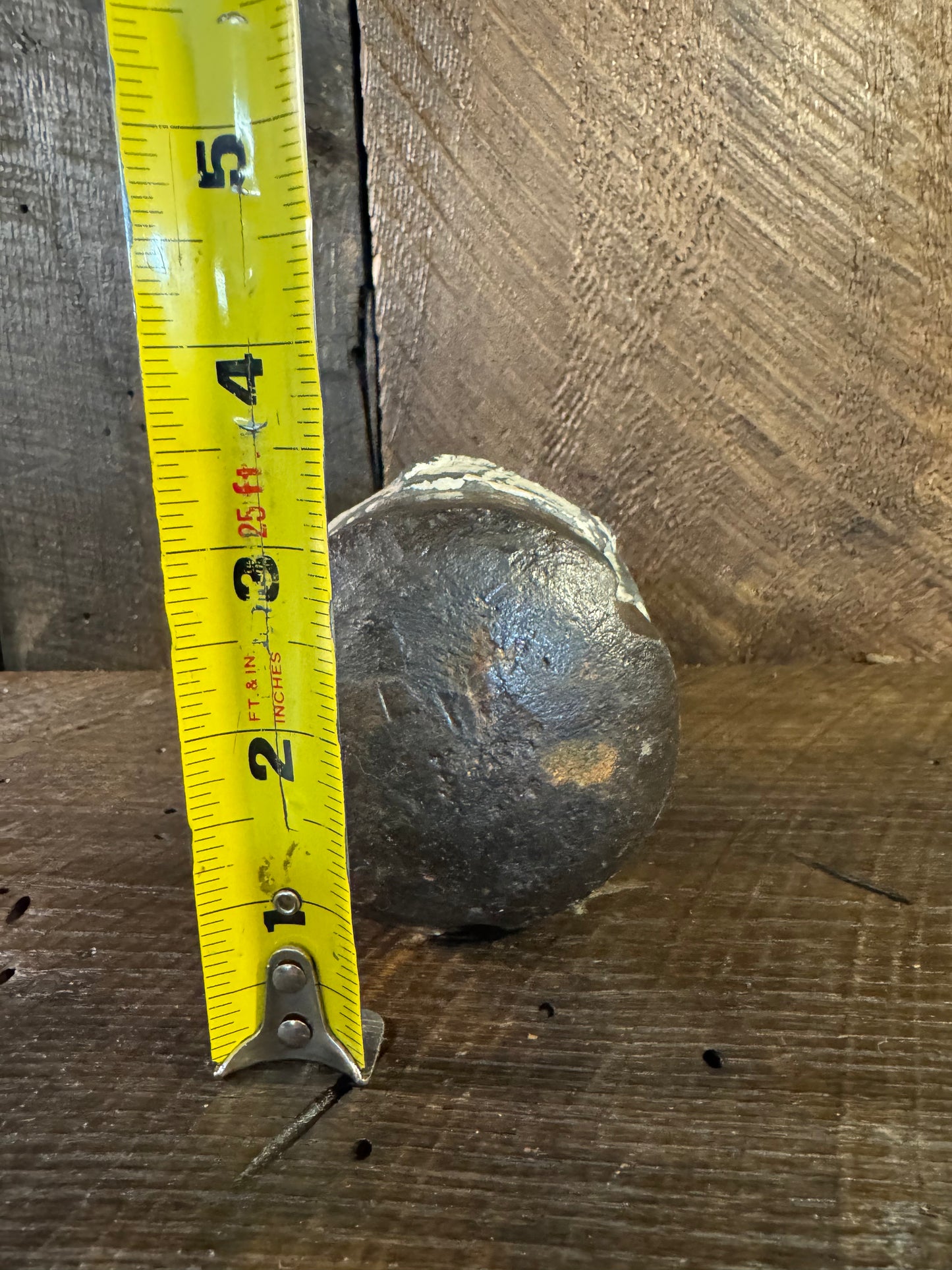Whiskey Rebellion Antiques
Civil War 3 Inch Hotchkiss Artillery Shell (Inert)
Civil War 3 Inch Hotchkiss Artillery Shell (Inert)
Civil War 3-inch Hotchkiss shell was a rifled artillery projectile developed by American inventor Benjamin B. Hotchkiss in the mid-19th century and widely adopted by the Union Army during the American Civil War (1861–1865). It was designed for use in 3-inch Ordnance Rifles (also known as M1861 or Rodman guns), which were smooth-bore field pieces converted to rifled barrels with three broad grooves for enhanced accuracy and range. These shells were cast iron, typically measuring about 7–7.25 inches in length and weighing around 8–9 pounds (unfired), with a diameter of approximately 2.85–2.9 inches to fit the gun's bore.
Design and Components
The shell's innovative design featured a wrought-iron or steel rotating band (sabot) at the base, which expanded upon firing to engage the rifle grooves, imparting spin for stability. It consisted of four main parts:
Body: The main hollow cast-iron shell filled with black powder (bursting charge of about 0.5–1 pound).
Base cup and sabot: Brass or lead components at the rear to seal the propellant gases and guide rotation.
Fuze: A percussion or time fuze (often Hotchkiss's own design) screwed into the nose, which ignited on impact or after a set delay to detonate the charge.
Flame grooves: Three spiral grooves along the body to vent gases and aid in fuze ignition.
This modular construction allowed for reliable performance in rifled guns, reducing the risk of bursting compared to competitors like the Parrott shell. Unfired examples measure about 7 3/16 inches, compressing slightly to around 6.75 inches upon firing due to the force.
💡 A striking piece of Civil War artillery history!
Ships Free!
Couldn't load pickup availability
